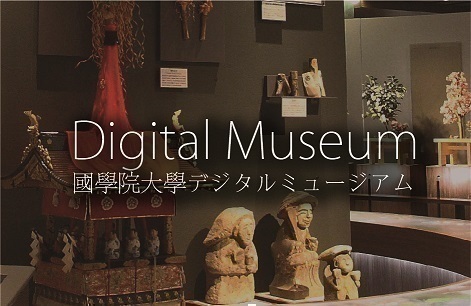- トップ
- Encyclopedia of Shinto
- Saimon
Encyclopedia of Shinto
| Main Menu: | |
| Links: |
詳細表示 (Complete Article)
| カテゴリー1: | 6. Belief and Practice |
|---|---|
| カテゴリー2: | Divination and Supplication |
| Title | Saimon |
| Text | Saimon, also pronounced saibun, is a written proclamation that is read to the spirit of one or more kami. In days of old, "imperial proclamations" (senmyō) were also called saimon. At the Grand Shrine of Ise (Ise jingū), saimon refers to a report from the emperor presented by an imperial messenger. In contrast with norito which have a strong tendency to be recited at public ceremonies of Japanese origin passed down from archaic times, saimon are generally read on non-official occasions, including occasions of individual worship or festivals transmitted from China. The word saimon first appears in The Chronicles of Japan, Continued (Shoku Nihongi ) in an entry for the 5th day of the 11th month of 787 during Emperor Kanmu's reign: "During the worship of the celestial deity at Katano, the saimon read ... ." The saimon included in Sugawara Poems (Kanke bunsō , ca. 900) is entitled "Words for the Worship of the Shiroyama Deity" (Shiroyamagami wo matsuru fumi ) and follows the same format. Saimon also appear in other texts, including Honchō monzui, Chōya gunsai, Shūgaishō , and Shissei shoshō. The Nakatomi saimon, a collection of poetry, imperial edicts, and other court documents from the Heian period, included in the Chōya gunsai and the Uta awase saimon by ŋe Masafusa, the saimon on the Uzumasa Of festival found in Uzamasa Ox Festival Illustrated Scroll (Uzamasa ushi matsuri emaki ) are examples of wabun saimon, written in Japanese diction using Japanese readings of Chinese characters. The Engishiki includes a description of the festival Nanomatsuri held by the Bureau of Divination (Onmyōryō) to exorcise evil spirits: "A sugomo mat was brought and placed in the courtyard. The offerings were arranged [on the mat]. Afterward, a yin-yang diviner read a saimon." Even though the latter half of the text mentioned is formatted identically to a norito, it is called a saimon because it was read by a "yin-yang diviner" (onmyōji) and the Nanomatsuri ceremony originated in China. In The Pillow Book (Makura no sōshi, section 243), the phrase "people who read the saimon of Miyanobe" is part of a list and refers to the saimon read during the Miyanome Festival held by Heian aristocrats on the first Day of the Horse (hatsu'uma) in both the first and last months of the lunar year. The Tales of Times Now Past (Konjaku monogatari, Tale 26:21) describes a ceremonial scene: "[the monk] appropriately and thoroughly arranged the washed rice, fruits in season, and other offerings, read a saimon, and finished the ceremony." In one episode of Genpei jōsuiki, which is an account of the Genpei War, Jurō Kurandō (Minamoto Yukiie) presents a saimon from the provincial office of Mikawa to the Grand Shrines of Ise (Ise Jingū) and requests prayers for the defeat of the Taira clan but is refused. In addition, the word saimon refers to texts that are read by yin-yang diviners, mountain ascetics (yamabushi ), or other persons for the worship of the celestial and earthly deities during a civil festival or ceremony that is not governed by shrine regulations on worship (zassai ). From the Kamukara period, mountain ascetics became so-called "saimon reciters" (saimongatari ) who intoned Yamabushi saimon to the accompaniment of their shakujō staff's jangling rings and conch-shell horn. Such recitation later turned into street performances in the form of songs, such as "song saimon" (utazaimon) or "sermon saimon" (sekkyō saimon), performed as secular entertainment or by itinerant minstrels. The long popularity of saimon kudoki performers who recited "parodied saimon" (mojiri saimon) continued even into the Meiji period. Around the Genroku era (1688-1703), utazaimon sung to shamisen accompaniment about events such as romantic double-suicides became a popular fad that influenced jōruri chanting for the puppet theater. In Naniwa miyage, the famed jōruri playwright Chikamatsu Monzaemon (1653-1724) is quoted: "The jōruri of the past was just like the saimon of today and had neither flower nor fruit." In the Meiji period, saimon continued developing into a type of narrative ballad called naniwabushi. —Nakajima Hiroko |




